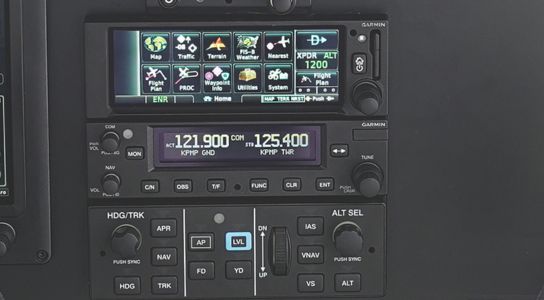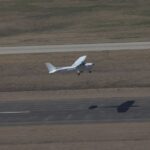The mark of a good pilot is staying ahead of the airplane, anticipating what’s coming, and being ready to act promptly. This principle applies to both flying the airplane and managing radio communications.
To “stay ahead” of communications, the best place to start is on the ground. Before takeoff, develop a communications plan by noting whom you’ll need to contact and their frequencies. Even with a glass cockpit, having this information readily available prevents the distraction of scrolling through multiple screens to find what you need. This practice also ensures you’ve considered all aspects of flight, such as whether a controlled airport’s tower will be operational upon arrival. Many towers have limited operating hours, so you may need to use the tower frequency or a CTAF (Common Traffic Advisory Frequency). Being prepared is key to feeling comfortable with your communications needs.
The most critical element of communication is the accurate exchange of information. Controllers need to know who you are (N number and aircraft type), where you are (location and altitude), and what you are asking for (entering their airspace to land, transitioning their airspace, etc.), and, if relevant, whether you have the current ATIS information. By knowing what the controller needs, you can provide the necessary information in a single, concise transmission. This is crucial in busy airspace to prevent the controller from needing to ask for additional information. The goal is to provide exactly what’s needed and nothing more.
From the pilot’s perspective, it’s important to fully understand the controller’s instructions and anticipate what might be said. The normal flow of communication from a controller includes an instruction followed by a number, such as “turn left heading 360,” “climb and maintain 3000,” “intercept the 172 radial,” or “contact approach on 124.3.” If you’re entering Class D airspace to land, expect specific directional guidance to a runway, such as “enter left downwind for runway 32” or “cleared straight in for runway 17.”
When departing from a controlled airport, listen to the ATIS information and write down the key details. Contact ground control and tell them who you are, where you are, what you want to do, and that you have the appropriate ATIS information. Repeat the taxi instructions to ensure accuracy and verify your clearance to cross any runways along your path to the active runway.
If you’re a student pilot or lack experience with controlled airports, spend some time listening on the various frequencies to get the feel and rhythm of communications. You’ll soon notice the difference between “professional” pilots and others. This practice will also help you overcome “mic fright” by knowing what to say and how to say it.
As a student pilot, informing the controller of your status can be helpful, as it may prompt them to speak slower and to keep a closer eye on you. If the controller is speaking too quickly, don’t hesitate to request that they slow down.
When operating at uncontrolled airports, two things are important. First, listen for other traffic in the pattern or preparing for takeoff. Visualize the location of other aircraft to integrate smoothly into the traffic flow and avoid interference. Essentially, you’re acting as your own controller to ensure flow and separation. Second, provide your own position reports and state your intentions clearly, such as “five miles east, will be entering left downwind for runway 15” or “taking off on runway 15 for a southeast departure.” Remember, not all pilots will provide position reports, so it’s always your responsibility to look out for other traffic.
Aviation communication has its own special language. Section 2 of the AIM, Chapter 4, “Radio Communications Phraseology and Techniques,” along with the “Pilot/Controller Glossary,” are valuable resources for understanding communication norms and terminology. Two terms that are helpful for those new to working with ATC are:
“Say Again”: When communicating with ATC, it’s crucial that you fully understand their instructions. If you have any doubt or if someone “stepped” on the transmission, simply say “Say again” to request a repeat of the last transmission. This approach is more efficient than explaining what you didn’t understand. You should never feel embarrassed or apologize for needing clarification.
“Unable”: The controller’s job is to make everything run as smoothly as possible while ensuring safe separation of traffic. In so doing, they might ask you to do something that won’t work for your situation. For example, they might assign a heading or altitude that could lead you into a cloud. As a VFR pilot, you’re not only within your rights but must tell the controller “Unable.” As pilot-in-command, you’re responsible for the safe and legal operation of your aircraft and cannot delegate this responsibility to a controller. While you should always comply with ATC instructions, there may be times you cannot and must take responsibility to say “unable.”
While this article barely scratches the surface of what’s involved in effective radio communication, it’ll hopefully serve as an encouragement for you to hone your communication skills as you strive to become a better and more proficient pilot.










